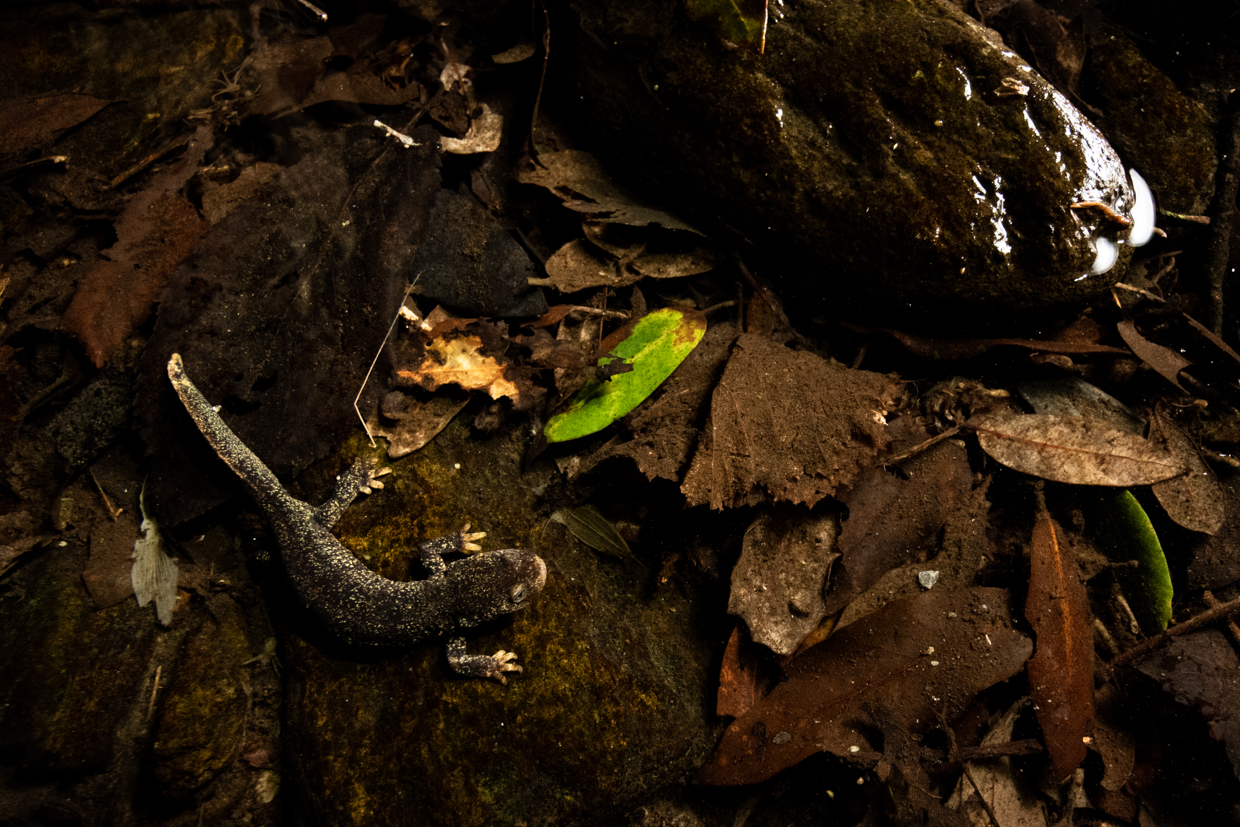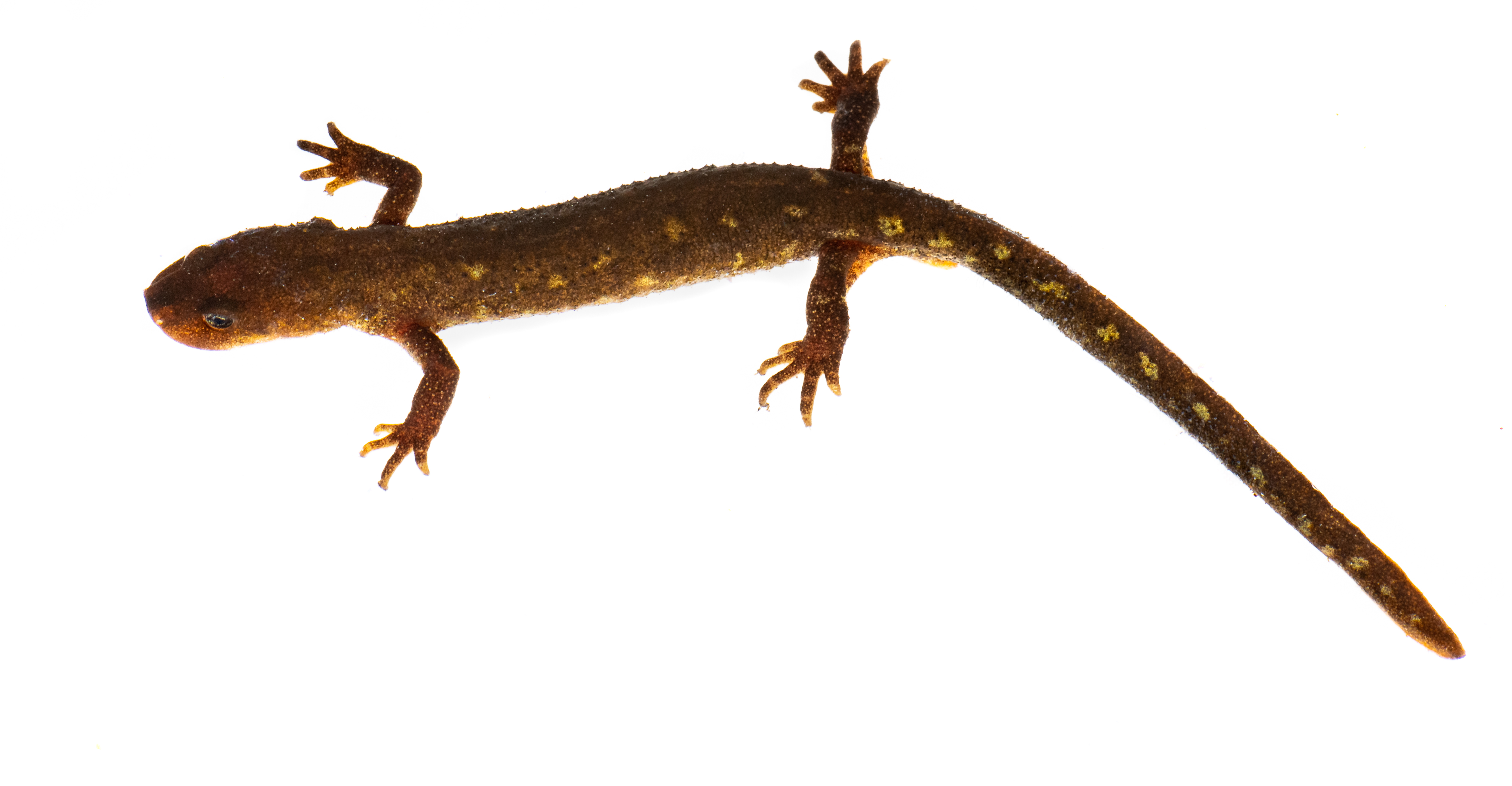Descoberta una subespècie nova del Tritó del Montseny, un animal únic a Catalunya amenaçat per l'extinció
Descoberta una subespècie nova del Tritó del Montseny, un animal únic a Catalunya amenaçat per l'extinció
Descoberta una subespècie nova del Tritó del Montseny, un animal únic a Catalunya amenaçat per l'extinció
Una investigació liderada per l'Institut de Biologia Evolutiva (IBE) ha descobert una nova subespècie del Tritó del Montseny, l'únic vertebrat endèmic de Catalunya.
L'estudi revela dades clau sobre la seva ecologia que poden contribuir a la conservació d'aquesta espècie en perill crític d'extinció.

Al Massís del Montseny, que està dividit per la conca del riu Tordera, a Catalunya, habita un amfibi únic al món que porta el nom de la seva pròpia llar: el tritó del Montseny. Amb una població de tan sols 1.500 exemplars, aquest petit animal és l'únic vertebrat endèmic de Catalunya i l'amfibi més amenaçat d'Europa.
Això es deu en part al fet que el seu hàbitat es redueix exclusivament al Massís del Montseny, on la seva petita població es divideix en dos llinatges entre la cara est i oest del massís del Parc Natural i Reserva de la Biosfera del Montseny. Ambdós llinatges s'han mantingut separats al llarg del temps i han evolucionat de manera independent, però fins ara havien estat considerats la mateixa subespècie.
Ara, un equip liderat per l’Institut de Biologia Evolutiva (IBE), un centre mixt del Consell Superior d’Investigacions Científiques (CSIC) i la Universitat Pompeu Fabra (UPF), ha descobert que el llinatge occidental conforma una nova subespècie, el tritó del Montseny occidental (Calotriton arnoldi laietanus). Aquest descobriment pot contribuir a la protecció del tritó del Montseny, ja que aporta dades clau sobre la seva ecologia i conservació.

Hàbitat oest del Montseny. Crèdit a Adrián Talavera.
Trobada una nova subespècie del tritó del Montseny
L'estudi ha analitzat dades morfològiques, genòmiques i ecològiques per descobrir les diferències entre els dos llinatges del tritó del Montseny.
“Basant-nos en un estudi recent en què vam seqüenciar més de 100 individus de totes les poblacions conegudes, vam descobrir que el genoma del tritó del Montseny occidental era més diferent del que esperàvem. Integrant les diferències ecològiques i morfològiques vam determinar que es tractava d'una nova subespècie”, comenta Salvador Carranza, investigador principal de l'IBE, on dirigeix el grup de Sistemàtica, biogeografia i evolució de rèptils i amfibis i que ha liderat l'estudi.
Així mateix, la investigació ha revelat que el tritó del Montseny occidental habita en rierols coberts principalment per alzines i a menor altitud que els seus germans del costat est del massís. Aquesta subespècie, C. arnoldi laietanus, ha estat nomenada pel poble iber que una vegada va compartir el seu hàbitat, els Laietans. La seva morfologia és més robusta, llueixen un puntejat platejat distintiu als laterals del cos i, en el cas dels mascles, el seu musell es torna blanquinós amb l'envelliment.
“El tritó del Montseny oriental, en canvi, és més esvelt i habita típicament en rierols dins de fagedes. A diferència de l'occidental, té taques grogues que li permeten camuflar-se entre la fullaraca” comenta Adrián Talavera, investigador predoctoral “laCaixa” de l'IBE i primer autor de l'estudi, i afegeix que “conèixer aquestes diferències ecològiques entre ambdues subespècies pot ser clau per a la seva conservació”.
Noves claus per a la conservació del Tritó del Montseny, una espècie en perill crític d'extinció
El tritó del Montseny habita una àrea de distribució molt restringida del massís que li dona el nom. La seva capacitat de dispersió és tan baixa que les seves poblacions amb prou feines es desplacen uns pocs metres cada any i mai no surten de l'aigua. Això fa que les seves poblacions siguin propenses a la fragmentació i que conservar aquesta espècie en perill crític d'extinció es compliqui.

Tritó del Montseny Oriental hembra (Calotriton arnoldi). Crèdit a Adrián Talavera.
Les amenaces per a la seva supervivència com el canvi climàtic, les malalties emergents, la pèrdua d'hàbitat induïda per l'ésser humà i l'esgotament de les aigües subterrànies, poden concentrar-se en un terreny tan limitat i acabar amb aquesta espècie en un curt període de temps. Per assegurar la seva supervivència, de l'any 2017 al 2022 es va desenvolupar el programa LIFE Tritó Montseny a iniciativa de la Diputació de Barcelona, Zoo de Barcelona, Diputació de Girona, Forestal Catalana i Generalitat de Catalunya amb la col·laboració del Parc Natural i Reserva de la Biosfera del Montseny, que ha desenvolupat un paper clau en la conservació activa realitzada fins avui.
Actualment, continuen en marxa programes de conservació que inclouen la reproducció de l'espècie al Centre de Fauna de Torreferrussa, Pont de Suert i Bagà, el Zoo de Barcelona, el Zoo de Chester al Regne Unit i el Centre de Recerca i Educació Ambiental de Calafell (CREAC) per poblar noves zones del massís que puguin ser adequades per a l'espècie.
Fins al moment, ja s'han dut a terme reintroduccions en 8 torrents nous del Montseny: 5 a la zona occidental i 3 a la zona oriental del massís. En total, s'han reintroduït més de 3.000 exemplars al seu hàbitat natural del Montseny.
“Afortunadament, des de l'inici del programa de conservació, les dues subespècies s'han tractat independentment per precaució i les dues poblacions s'han gestionat de manera diferent en la cria i el maneig. El nostre estudi confirma l'encert d'aquestes mesures, alhora que assegura que no es barregin en el futur”, afirma Adrián Talavera.
“Comptem amb normatives estrictes per protegir les espècies en perill d'extinció, però sovint les subespècies i les seves diferents necessitats passen desapercebudes”, comenta Salvador Carranza. “La descripció d'aquesta nova subespècie pot aconseguir una major protecció per a aquest amfibi que és únic al món i tot un emblema de la biodiversitat catalana”.

Tritó del Montseny occidental. Crèdit a Adrián Talavera.
Aquesta investigació ha rebut el suport del Programa de beques doctorals ”laCaixa”, el Ministeri de Ciència, Innovació i Universitats d'Espanya, la Diputació de Barcelona—Àrea d’Espais Naturals, la Generalitat de Catalunya i el projecte LIFE15 NAT/SE/000757.
Article referenciat:
Talavera A, Valbuena-Ureña E, Burriel-Carranza B, Mochales-Riaño G, Adams DC, Amat F, Carbonell F, CarranzaS. 2024. Integrative systematic revision of the Montseny brook newt (Calotriton arnoldi), with the description of a new subspecies. PeerJ 12: e17550 DOI 10.7717/peerj.17550
